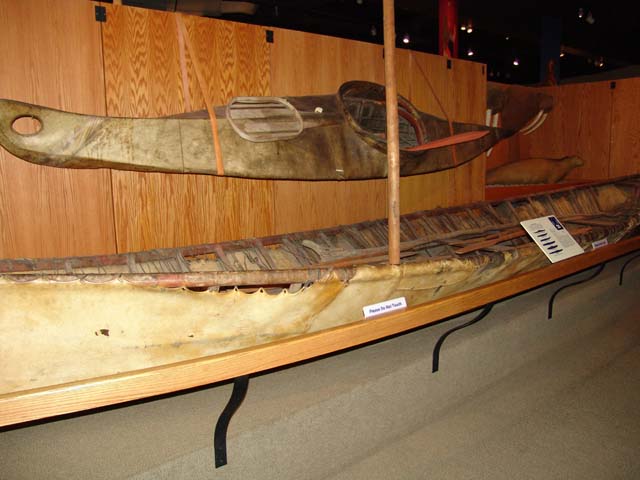
Fairbanks
July 22-27, 2004
After Denali we spend a week at Fairbanks doing some housekeeping chores, sightseeing, paddling on the Chena River, and arranging for a trip to Barrows. It turned out that we were in Fairbanks during their Golden Days celebration; this year was special since this is the 100 year anniversary of the founding of Fairbanks.

The University of Alaska, which has its main campus in Fairbanks, has an excellent museum on Alaska. This display shows an Eskimo kayak (above) and umiak (below), typical of what the Eskimos used for whaling. Can you imagine going out several miles into the ocean in one of these boats looking for whales?
Especially moving in the museum was the display on the Aleutian islands and how the Aleuts and Japanese were put in internment camps during World War II. We already knew that Japanese in California, Oregon, and Washington were treated in this way also, but the information about the Aleuts was new to us. The evacuation of the Aleuts was prompted by the Japanese invasion of the Aleutian Islands. But their subsequent treatment and the destruction of their villages is a sorry part of our nation's history, for which the federal government has only recently apologized and provided restitution.

This muskox is in the university's large animal research
facility. Muskoxen were indigenous to parts of the coast of Alaska along the
Bering Strait and the Arctic Ocean, but were almost hunted to extinction. Now
they are being reintroduced to these areas. Muskoxen are rather short, about
three and half feet tall and very shaggy.

Several of the early homes in Fairbanks have been
relocated to Pioneer Park, where they are now mostly used for gift shops (ugh),
but it was interesting to see the houses and read the plaques telling their
history.

One of the major tourist attractions in Fairbanks is a riverboat
cruise on the Chena river. The riverboat itself is not very interesting, but it
provides a pleasant way to get from one point of interest to another. They show
you a wide variety of unrelated, but interesting things on the trip - an Alaska
bush plane taking off, a stop at the home of Susan Butcher and Dave Monson, who
raise sled dogs, and a stop at a recreated Athabascan native village.
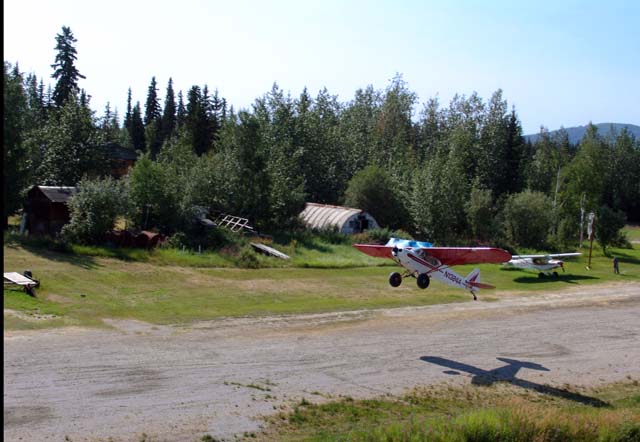
This bush plane took off in a very short distance, about 150
feet. It has tundra tires, which are much fatter and softer than regular tires;
you can actually see them flex during the landing.

The riverboat announcer pointed out the home of Jack
McManus, who is a well-known lawyer from the Madison, WI area (our hometown) so
this was amusing to us. The sign near the river says "American by birth (Wis.),
Alaskan by choice", which I find a little offensive, but McManus has always been
a little offensive.

The next stop was at the home and kennels of Susan Butcher and
Dave Monson, who raise and race sled dogs. Susan is a four-time winner of the
Iditarod and Dave has won other major races. Susan was out of town, so Dave gave
a short talk on huskies and dog sled raising, and then took some of the dogs on
a run around the pond behind the house. Since there is no snow, the dog team
pulled the ATV.
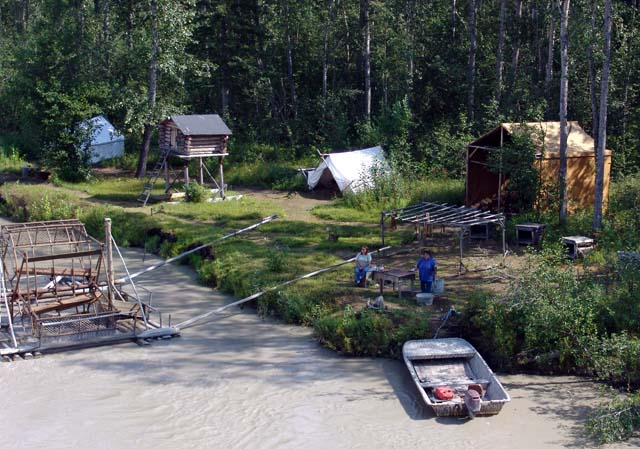
The next stop for the river boat was an Athabascan fish camp.
Many native families in Alaska depend on hunting and fishing for a major portion
of their food; Alaska allows this under what is called subsistence hunting and
fishing, which has different regulations than sport hunting and fishing. This
fish camp has a fish wheel which is powered by the flow of the river. As the
wheel turns the baskets catch any fish that happen to have swam into their path;
the fish are then channeled into a holding tank. The contraption operates
without any human attention, other than emptying the holding tank when it gets
full.
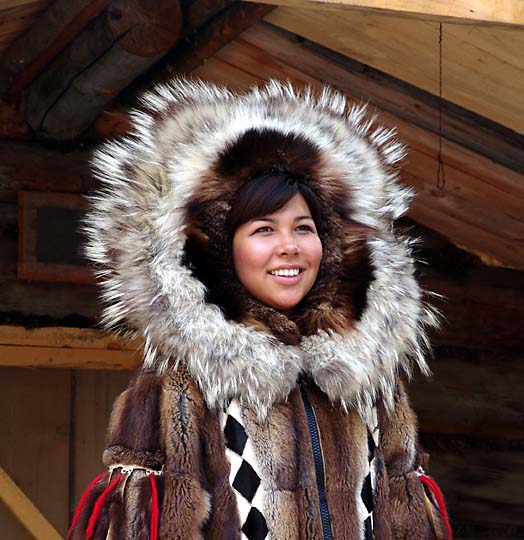
The last major stop was the recreated Athabascan village, which
I didn't find as interesting since we had seen similar things in Anchorage and
in several museums. The parka being modeled by this native girl was a beautiful
work of art, however.
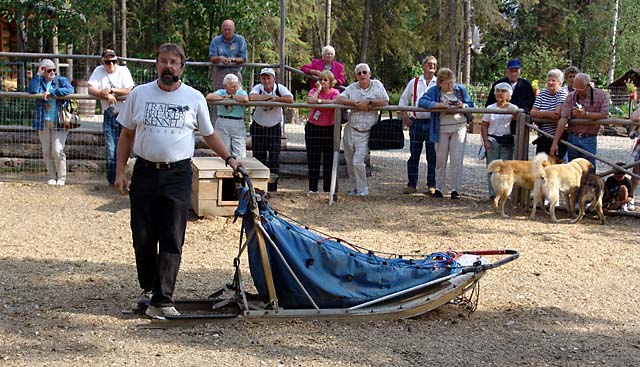
Dave Monson also came to the Athabascan village to talk more
about dog sled racing and huskies. Some of his dogs are at the fence seeking
attention from visitors.
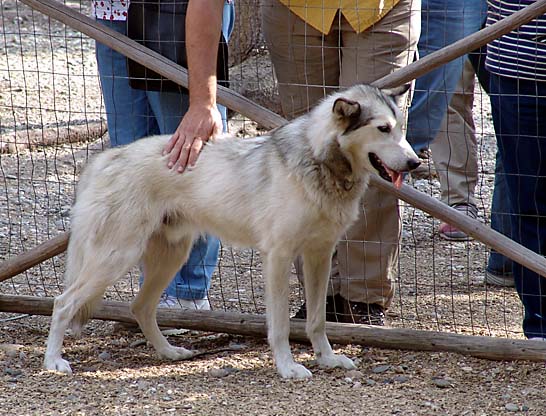
These dogs are Alaskan huskies and are smaller than the malamute and Siberian huskies. Manson said that smaller dogs do better for long distance dogsled racing. The larger dogs are better for pulling heavier loads shorter distances.
I was surprised at how friendly the dogs were. Sled dogs that we had seen several years ago in northern Minnesota seemed vicious. On our Alaska trip four years ago we saw sled dogs near Denali; their owner would allow us to pet them only if she were there also. But these dogs seemed as a friendly as a family pet. Monson said that they give the dogs a lot of attention, and don't tolerate vicious behavior from the dogs.